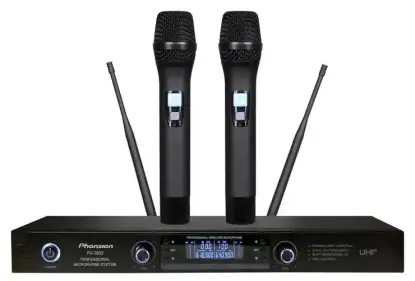
EU CE-LVD Directive: Applicable Products and Tests(EN 60950-1, EN 60335-1, EN 61010-1)
The EU CE-LVD Directive (Low Voltage Directive) is a regulatory framework in Europe for the safety requirements of low voltage equipment. Its aim is to ensure that products, under normal and foreseeable abnormal use, do not pose hazards to humans, pets, or property. The CE-LVD Directive applies to electrical equipment operating with a rated voltage between 50 and 1000 volts, including but not limited to the following product categories:
1. Household Appliances: Such as televisions, washing machines, refrigerators, rice cookers, etc.
2. Office Equipment: Such as printers, copiers, fax machines, computers, etc.
3. Communication Devices: Such as telephones, wireless routers, mobile phone chargers, etc.
4. Lighting Equipment: Such as desk lamps, floor lamps, light fixtures, etc.
5. Entertainment Devices: Such as sound systems, TV set-top boxes, game consoles, etc.
6. Power Tools: Such as drills, hammers, lawn mowers, electric saws, etc.
7. Medical Devices: Such as electronic blood pressure monitors, electrocardiographs, thermometers, etc.
8. Security Equipment: Such as surveillance cameras, intrusion alarm systems, access control systems, etc.
9. Vehicle Equipment: Such as automotive electronic devices, electric bicycles, electric scooters, etc.
10. Battery and Power Devices: Such as battery chargers, inverters, power adapters, etc.

It is important to note that these are just common product categories; in reality, any electrical equipment operating with a rated voltage between 50 and 1000 volts may need to comply with the CE-LVD Directive requirements. Manufacturers must ensure that their products do not pose safety risks under normal and foreseeable abnormal use.
Key Points for Manufacturers Seeking CE-lvd certification:
1. Product Classification: According to the CE-LVD Directive, products are classified into two categories: Category I and Category II. Category I applies to simpler products with lower safety requirements, while Category II applies to more complex products with stricter safety requirements. Manufacturers need to determine the category of their products and follow the corresponding certification processes and requirements.
2. Technical Documentation: Manufacturers must prepare a series of technical documents, including product specifications, design drawings, test reports, and lists of materials and components. These documents demonstrate compliance with the CE-LVD Directive and are provided to certification bodies as needed.
3. Conformity Assessment: Manufacturers must conduct a conformity assessment to ensure that their products meet the CE-LVD Directive requirements. The assessment can include tests, inspections, and document reviews. Manufacturers can perform the conformity assessment themselves or delegate it to a certification body.
4. Testing and Standards: Products must be submitted to accredited laboratories for testing to verify their safety performance. The testing standards are typically based on those issued by the European Committee for Electrotechnical Standardization (CENELEC), such as EN 60950-1, EN 60335-1, and EN 61010-1. Manufacturers must ensure that their products comply with the relevant standard requirements during testing.
5. CE Marking: Once a product complies with the CE-LVD Directive requirements, manufacturers can affix the CE marking to the product. The CE marking indicates that the product meets EU regulatory requirements and can circulate freely within the European market.
6. Technical Documentation and Declaration of Conformity: Manufacturers must retain relevant technical documentation and a declaration of conformity for CE-LVD certification. The technical documentation includes product specifications, design drawings, test reports, and lists of materials and components, proving compliance with the CE-LVD Directive. The declaration of conformity is a statement by the manufacturer that the product meets the CE-LVD Directive requirements, containing necessary information such as the manufacturer’s name and address, product description and model, and applicable standards.
Additionally, manufacturers must ensure ongoing compliance of their products in the market. If any changes are made to the product that could affect its compliance with the CE-LVD Directive, manufacturers need to re-evaluate the product’s compliance and update the relevant technical documentation and declaration of conformity. Manufacturers should also monitor market feedback and safety issues and take necessary actions to maintain product safety performance.
Test Content
The CE-LVD Directive requires manufacturers to conduct a series of tests on their products to ensure safety performance in compliance with EU standards. Here are some common test items:
1. Electrical Safety Tests: Including electric shock risk tests, insulation tests, grounding tests, leakage current tests, etc., to ensure that the product does not pose an electric shock risk under normal and foreseeable abnormal use.
2. Mechanical Safety Tests: Including physical injury tests, protection tests, mechanical strength tests, etc., to ensure that the product does not pose mechanical injury risks under normal and foreseeable abnormal use.
3. Flame and Combustion Tests: Including flame retardancy tests, combustion performance tests, etc., to ensure that the product does not cause or propagate fires under normal and foreseeable abnormal use.
4. Thermal Tests: Including temperature rise tests, high-temperature tests, low-temperature tests, etc., to ensure that the product does not generate excessive temperatures, causing fires or burns under normal and foreseeable abnormal use.
5. Electromagnetic Compatibility (EMC) Tests: Including radiation tests, immunity tests, etc., to ensure that the product does not cause or suffer from electromagnetic interference under normal and foreseeable abnormal use.
6. Marking and Labeling Tests: Including visibility and readability tests of product markings, warning labels, etc., to ensure that users can clearly understand the product’s safety use and maintenance requirements.
Additional common test items for CE-LVD compliance include:
7. Electronic Safety Tests: Including tests on electronic components and circuit safety performance, to ensure that the electronic parts of the product meet relevant safety requirements, such as overcurrent protection and overtemperature protection.
8. Dielectric Tests: Including dielectric strength tests, dielectric arc tests, etc., to ensure that the product’s insulation performance is adequate under normal working voltage and to prevent arc-induced fires.
9. Mechanical Strength Tests: Including mechanical impact tests, vibration tests, etc., to ensure the product's mechanical strength and stability during transportation, installation, and normal use.
10. Material Tests: Including material composition tests, material flammability tests, etc., to ensure that the materials used in the product meet relevant safety requirements, such as the use of non-hazardous substances and flame retardancy.
11. Power Supply Tests: Including power adaptability tests, power voltage range tests, etc., to ensure the product’s adaptability and stability under different power supply conditions.
12. Service Life Tests: Including reliability tests and durability tests, to ensure the product's reliability and performance stability throughout its expected service life.
Manufacturers need to select appropriate test items based on their product characteristics and applicable standards and ensure that tests are conducted in accredited laboratories or testing agencies. The test results should be recorded and included in the product's technical documentation for review by regulatory authorities and customers. Manufacturers should also regularly monitor market feedback and safety issues, taking necessary measures to ensure ongoing product safety performance and compliance.
Email:hello@jjrlab.com
Write your message here and send it to us
 Wireless Microphone Export Certification
Wireless Microphone Export Certification
 Audio-Visual Products SNI Certification in Indones
Audio-Visual Products SNI Certification in Indones
 FCC-ID: Still Needed if Module is Certified?
FCC-ID: Still Needed if Module is Certified?
 FCC Certification Fees for Handheld Fans
FCC Certification Fees for Handheld Fans
 FCC Certification Testing for Smart Lighting Produ
FCC Certification Testing for Smart Lighting Produ
 What is the ETSI EN 303 645 Testing Standard?
What is the ETSI EN 303 645 Testing Standard?
 UL Compliance and ETL Certification for LED Lighti
UL Compliance and ETL Certification for LED Lighti
 What is the IEC 60598 Standard?
What is the IEC 60598 Standard?
Leave us a message
24-hour online customer service at any time to respond, so that you worry!




